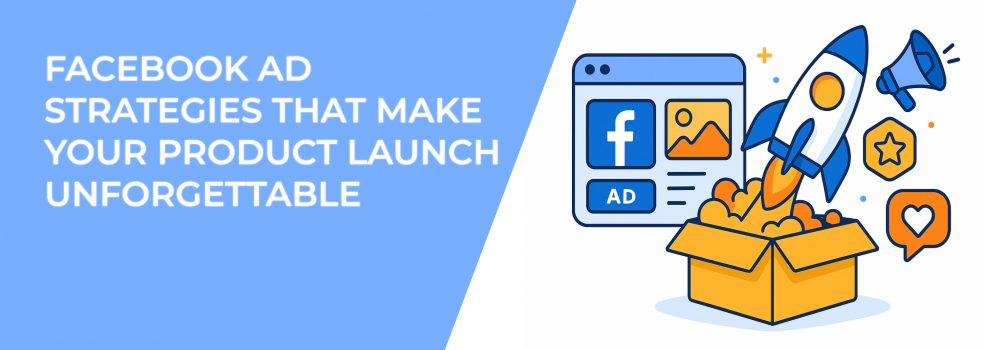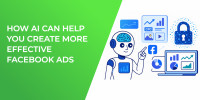Launching something new? Then you already know how easy it is to get lost in the Facebook feed. One second your ad’s live, and the next it’s buried under dance videos, birthday posts, and vacation photos.
That’s the challenge with Facebook and Instagram. You’re fighting for attention in a place built for distraction.
So how do you make your product launch something people notice and actually remember?
Here’s a more grounded, practical way to approach Facebook ads that can help your launch cut through the noise.
Start sooner than you think
A lot of businesses wait until launch day to start running ads. But by then, it’s often too late.
If you want people to care about what you’re launching, they need to hear about it before it drops. You’re building curiosity first — not pushing a product.
Start 2–3 weeks out. Run short, simple teaser ads. Maybe it’s a blurred image, a close-up shot, or just a quick line like “Coming soon for remote workers who need focus”.
Use video views or engagement ads to reach your current followers or past website visitors. These are low-cost ways to see who’s interested — and to build audiences you can retarget later.
A few easy ideas to try:
-
Ask a playful question in an Instagram Story poll: “Can you guess what’s coming next?”
-
Share a countdown timer post (not just on launch day — early on too).
-
Run a short video that hints at the problem your product solves, without revealing what it is.
The goal here isn’t sales, it’s attention. You want people to be thinking about your brand when the launch goes live.
Want a full strategy on building enthusiasm before launch day? Check out this guide on using Facebook ads to build a pre-launch audience.
Don’t just talk about the product — show why it exists
Once you’re ready to launch, don’t make your ad just a list of features. People scroll right past that.
Instead, lead with the why. What’s the problem this product solves? What’s frustrating, annoying, or time-wasting about the way things are now?
Let’s say you’re launching a new planner designed for freelancers who struggle to stay focused. Rather than just showing off the layout, tell a quick story in your ad. Maybe: “9:00am: plan the day. 9:12am: scroll TikTok. 10:00am: emails. 10:17am: forget what you were doing. Sound familiar?”
That’s how you get people to stop scrolling. They see themselves in the story, and now they’re open to a solution.
Some things that help:
-
Use photos or video that feel real. Show the product in a natural setting, like someone actually using it.
-
Try copy that sounds like something your audience would say, not what you’d write in a product catalog.
-
Test different angles. Focus on the emotion behind the problem — stress, distraction, wasted time — and not just the specs.
When your ad feels like a conversation instead of a pitch, people are far more likely to lean in — and remember what you’re offering.
Be smart about who you target (and when)
Facebook’s targeting options have changed a lot. So if you’re still only picking “small business owners” or “fitness enthusiasts” or always going broad, it’s time to rethink.
Instead, build your targeting in layers.
Start with people who already know you: people who’ve watched your teaser videos, clicked your emails, visited your site. These are warm audiences that are way more likely to care on launch day.
Then build lookalikes based on actual buyers, email clickers, or video viewers and stack them together in one campaign.
Keep this in mind:
-
Exclude people who’ve already bought (you’d be surprised how many forget to do this).
-
Watch your frequency — if people are seeing the same ad 4+ times and not clicking, change it up.
-
If you’re running a special offer, target people who’ve been on the fence before — like add-to-cart visitors who didn’t buy.
Think of your audience like a group of conversations. Not everyone should hear the same message.
Create urgency
People respond to urgency, but only when it feels honest. “Limited time offer” sounds like noise at this point. Be more specific.
For example:
-
“Order by Thursday to get the early-access bonus”;
-
“Only 150 shipped this week — we’ll restock, but it might take a while”;
-
“Free upgrade for the first 100 buyers”.
Even better: show urgency in the ad creative. Use a countdown timer, or update the text to say “Almost gone” as the offer winds down.
And don’t forget the comments. People will ask questions, express doubts, tag friends — that’s a good thing. Responding there quickly builds trust and helps others feel more confident buying.
If your frequency’s climbing and performance is dropping, this guide on how to spot ad fatigue early will help you adjust before your launch momentum fades.
After the launch, keep going
Most businesses wrap up their ads right after launch. That’s a mistake.
There’s a ton you can learn from how people responded and plenty of opportunity to keep the momentum going.
Here’s what to do:
-
Retarget people who clicked but didn’t buy. Show them reviews, testimonials, or use-case videos.
-
Check performance breakdowns — see which age groups, devices, or placements worked best. Use that info next time.
-
Turn your best-performing ads into ongoing campaigns. If one headline drove most of your sales, keep using it.
And if your launch underperformed? Look at what didn’t work — was it the creative, the targeting, or just bad timing? That learning is more valuable than a short spike in sales.
If your launch ads are getting clicks but no sales, here’s a helpful guide on what to do when your Facebook ads aren’t converting.
To sum up
Launching something new doesn’t mean shouting louder than everyone else. It means being clear, interesting, and relevant to the right people — before, during, and after launch day.
If you get that right, your product isn’t just “seen”. It’s remembered.
So go ahead and try the tips we shared for your next Facebook ad campaign for new products.

